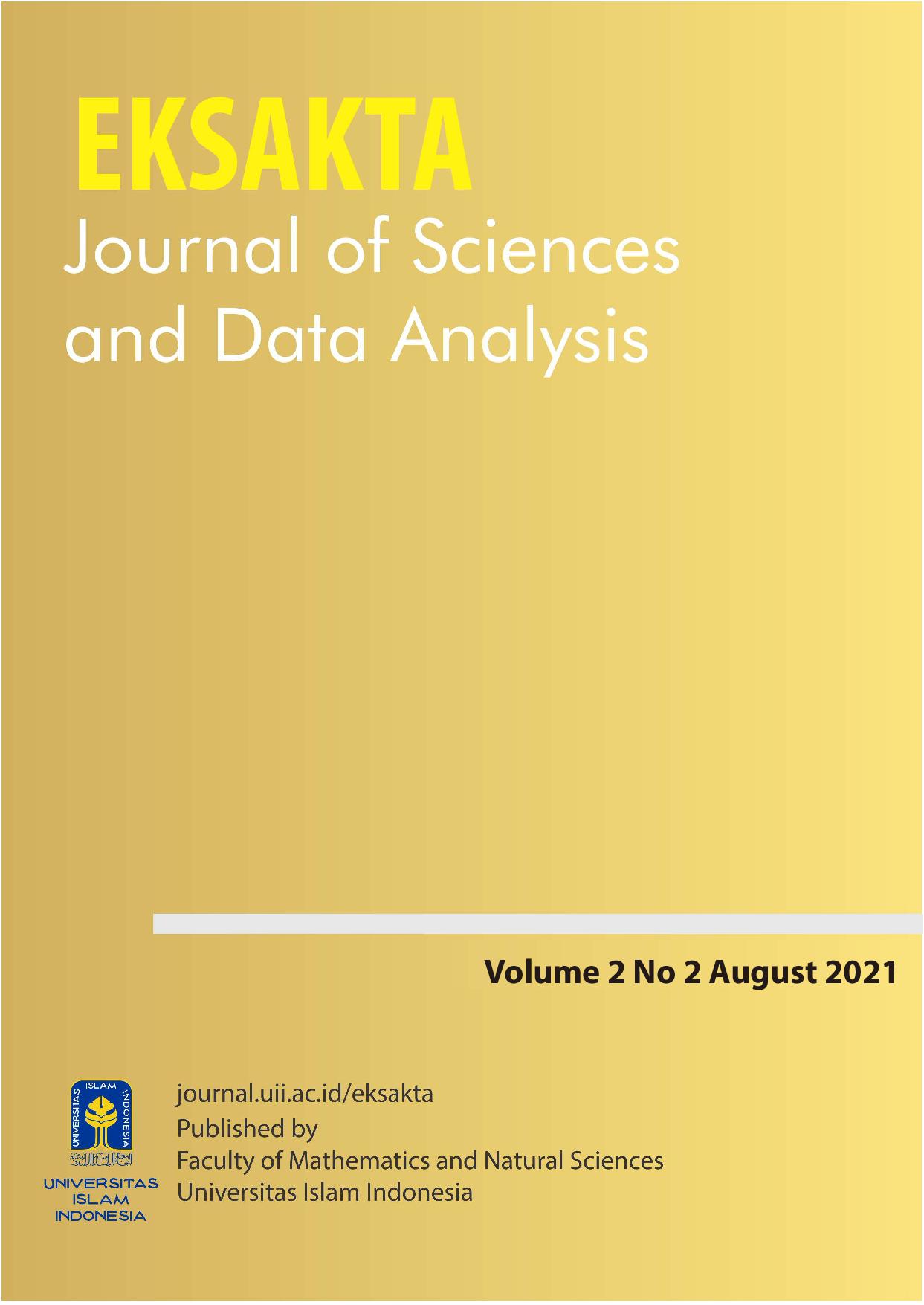Main Article Content
Abstract
Keywords
Article Details
Authors who publish with this journal agree to the following terms:
- Authors retain copyright and grant the journal right of first publication with the work simultaneously licensed under a Creative Commons Attribution License that allows others to share the work with an acknowledgment of the work's authorship and initial publication in this journal.
- Authors are able to enter into separate, additional contractual arrangements for the non-exclusive distribution of the journal's published version of the work (e.g., post it to an institutional repository or publish it in a book), with an acknowledgment of its initial publication in this journal.
- Authors are permitted and encouraged to post their work online (e.g., in institutional repositories or on their website) prior to and during the submission process, as it can lead to productive exchanges, as well as earlier and greater citation of published work (See The Effect of Open Access).
References
- B. Peng, S. Fang, L Tang, X Ouyang, G Zeng, Nanohybrid Materials Based Biosensors for Heavy Metal Detection, Micro and Nano Technologies 2019, 233-264, DOI: 10.1016/B978-0-12-814154-0.00008-6.
- H. Górska-Warsewicz, K. Rejman, W Laskowski, M Czeczotko, Milk and Dairy Products and Their Nutritional Contribution to the Average Polish Diet, Nutrients 11 (2019) 1171.
- R. Mahmoudi, M. Kazeminia, A. Kaboudari, SF. RahimiPir-Mahalleh, B. Pakbin, A review of the importance, detection and controlling of heavy metal in milk and dairy products, Malaysian Journal of Science 36 (2017) 1-16.
- H. Matusiewicz, Sample Preparation for Inorganic Trace Element Analysis, Physical Sciences Reviews, 2017, 1-39, DOI: 10.1515/psr-2017-8001.
- A. Paukov, R. Magaril, E. Magaril, An Investigation of the Feasibility of the Organic Municipal Solid Waste Processing by Coking, Sustainability 11 (2019) 389–401.
- C.H. Sánchez, Á. Gutiérrez, J.M. Galindo, D. González-Weller, C. Rubio, C.R. Burgos, A Hardisson, A Heavy Metal Content in Sewage Sludge: A Management Strategy for an Ocean Island, Revista de Salud Ambient 17 (2017) 3–9.
- E. Santoyo, S. Santoyo-Gutiérrez, PV Surendra. Trace analysis of heavy metals in groundwater samples by ion chromatography with post-column reaction and ultraviolet–visible detection, Journal of Chromatography A 884 (2000) 229-241.
- H. Soyeurt, D. Bruwier, J.M. Romnee, N. Gengler, C. Bertozzi, D. Veselko, P. Dardenne, Potential estimation of major mineral contents in cow milk using mid-infrared spectrometry, Journal of Dairy Science 92(6) (2009) 2444-2454.
- E.E. Ogabiela, U.U. Udiba, O.B. Adesina, C. Hammuel, F.A. Ade-Ajayi, G.G. Yebpella, U.J. Mmereole, M. Abdullahi, Assessment of metal levels in fresh milk from cows grazed around Challawa Industrial Estate of Kano, Nigeria, Journal of Basic and Applied Scientific Research 1(7) (2011) 533-538.
- K. Starska, M. Wojciechowska-Mazurek, M. Mania, E. Bruliriska-Ostrowska, U. Biernat, K. Karlowski, Noxious Elements in Milks and Milk Products in Poland, Polish Journal if Environmental Studies 20(4) (2011).
References
B. Peng, S. Fang, L Tang, X Ouyang, G Zeng, Nanohybrid Materials Based Biosensors for Heavy Metal Detection, Micro and Nano Technologies 2019, 233-264, DOI: 10.1016/B978-0-12-814154-0.00008-6.
H. Górska-Warsewicz, K. Rejman, W Laskowski, M Czeczotko, Milk and Dairy Products and Their Nutritional Contribution to the Average Polish Diet, Nutrients 11 (2019) 1171.
R. Mahmoudi, M. Kazeminia, A. Kaboudari, SF. RahimiPir-Mahalleh, B. Pakbin, A review of the importance, detection and controlling of heavy metal in milk and dairy products, Malaysian Journal of Science 36 (2017) 1-16.
H. Matusiewicz, Sample Preparation for Inorganic Trace Element Analysis, Physical Sciences Reviews, 2017, 1-39, DOI: 10.1515/psr-2017-8001.
A. Paukov, R. Magaril, E. Magaril, An Investigation of the Feasibility of the Organic Municipal Solid Waste Processing by Coking, Sustainability 11 (2019) 389–401.
C.H. Sánchez, Á. Gutiérrez, J.M. Galindo, D. González-Weller, C. Rubio, C.R. Burgos, A Hardisson, A Heavy Metal Content in Sewage Sludge: A Management Strategy for an Ocean Island, Revista de Salud Ambient 17 (2017) 3–9.
E. Santoyo, S. Santoyo-Gutiérrez, PV Surendra. Trace analysis of heavy metals in groundwater samples by ion chromatography with post-column reaction and ultraviolet–visible detection, Journal of Chromatography A 884 (2000) 229-241.
H. Soyeurt, D. Bruwier, J.M. Romnee, N. Gengler, C. Bertozzi, D. Veselko, P. Dardenne, Potential estimation of major mineral contents in cow milk using mid-infrared spectrometry, Journal of Dairy Science 92(6) (2009) 2444-2454.
E.E. Ogabiela, U.U. Udiba, O.B. Adesina, C. Hammuel, F.A. Ade-Ajayi, G.G. Yebpella, U.J. Mmereole, M. Abdullahi, Assessment of metal levels in fresh milk from cows grazed around Challawa Industrial Estate of Kano, Nigeria, Journal of Basic and Applied Scientific Research 1(7) (2011) 533-538.
K. Starska, M. Wojciechowska-Mazurek, M. Mania, E. Bruliriska-Ostrowska, U. Biernat, K. Karlowski, Noxious Elements in Milks and Milk Products in Poland, Polish Journal if Environmental Studies 20(4) (2011).




